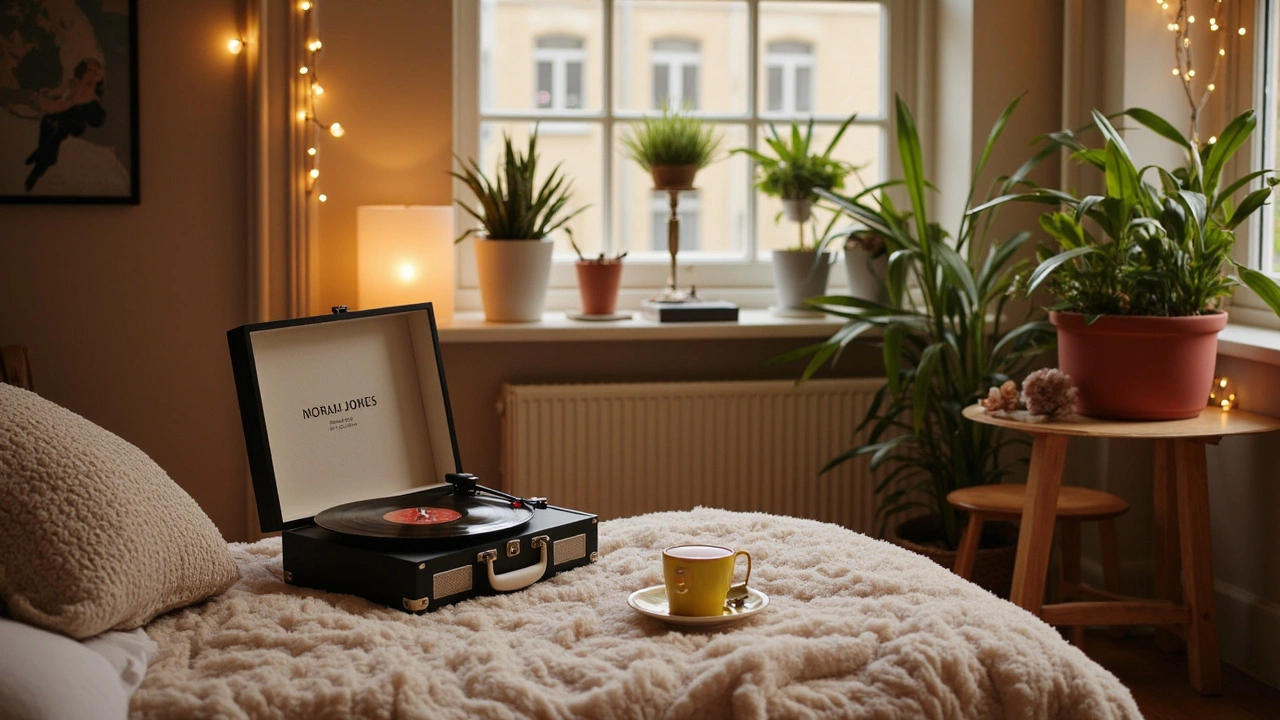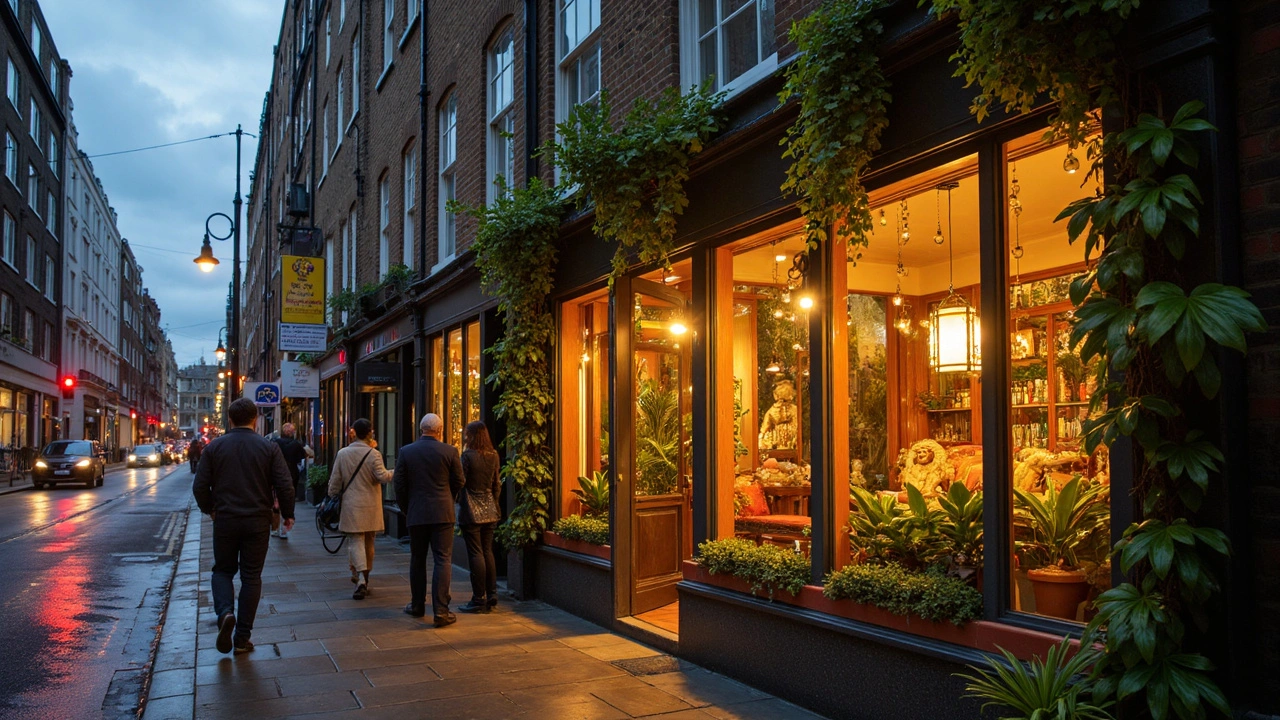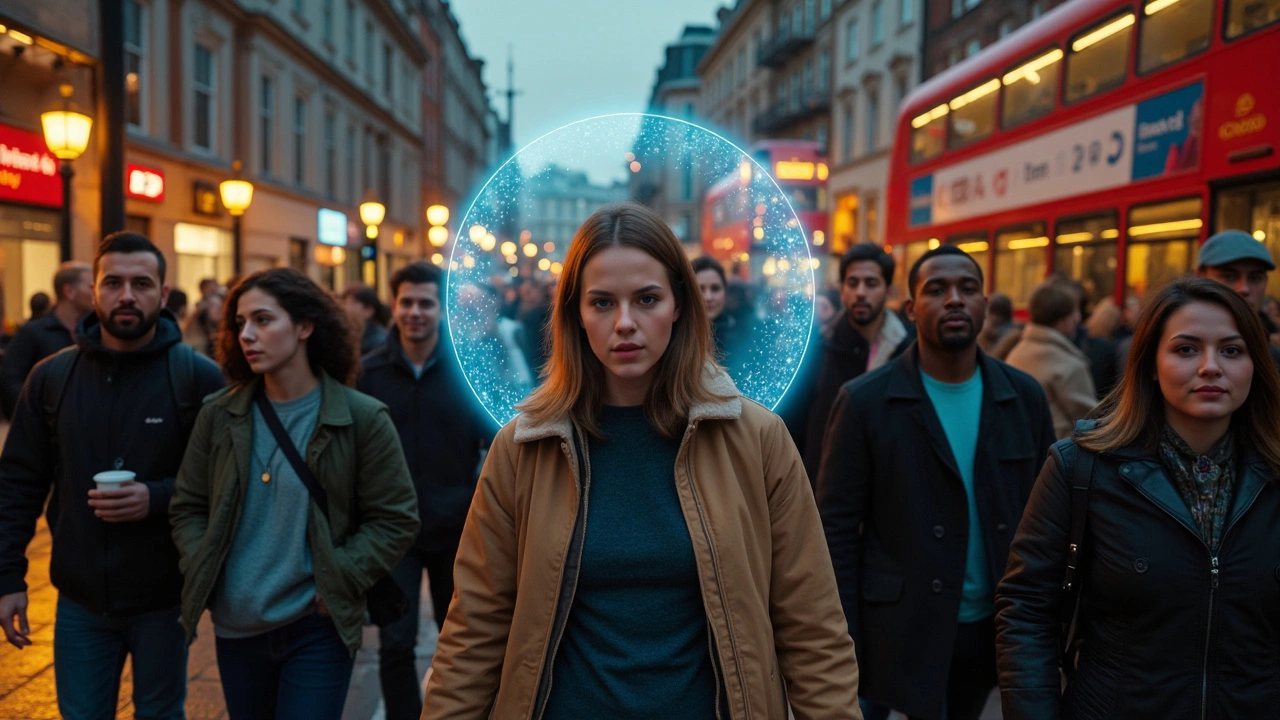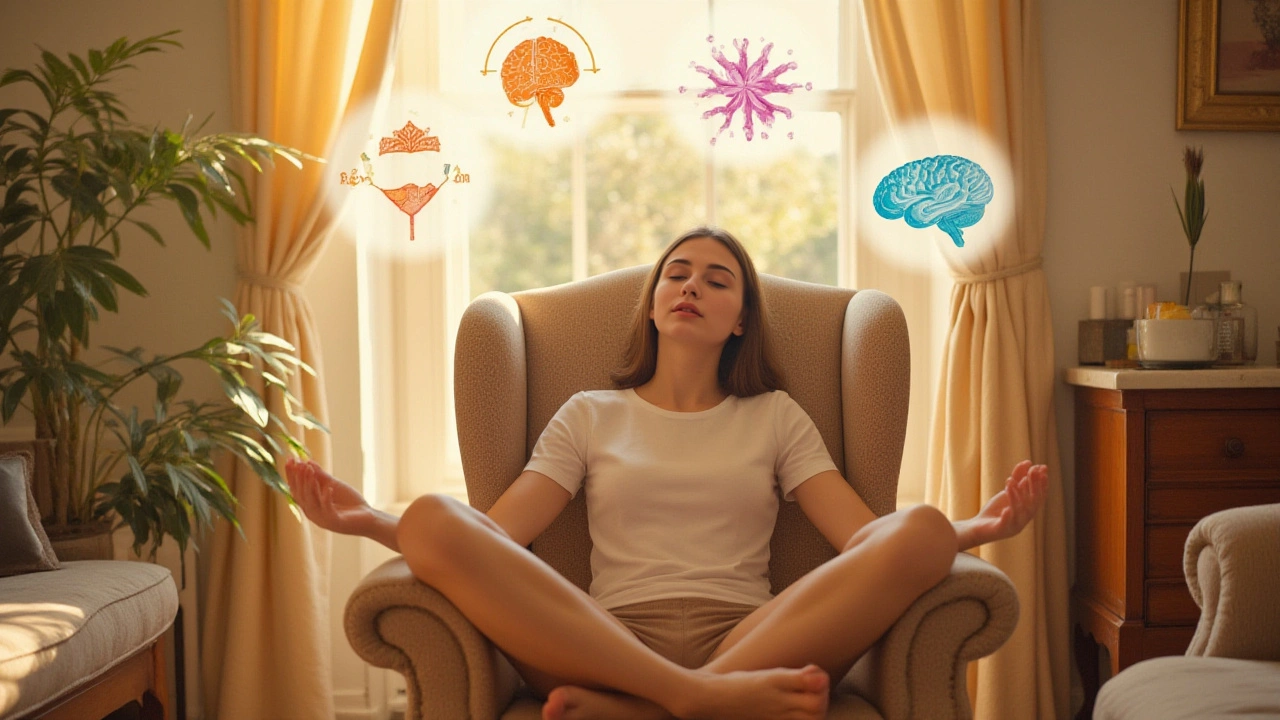Head Massage Ambiance: How to Get That Perfect Chill

You can give a killer head massage, but if the room’s screaming chaos, nobody’s going to relax. Ambiance isn’t just some spa-speak—it genuinely impacts how much someone enjoys a massage. The good news? Even small changes can totally amp up the vibe in your space, whether you’ve got a home setup or do this for a living.
Start by looking around the area where you’ll give the head massage. Is there harsh overhead lighting? Are there weird smells, clutter, barking dogs (Baxter, looking at you)? Every detail messes with the mood—either for the better or worse. Getting things dialed in doesn’t have to be a project. You just need to know what details matter most, and have a few cheap tricks up your sleeve.
- Nail the Right Lighting
- Pick Calming Sounds
- Temperature and Comfort Hacks
- Scents that Work (and Ones that Don’t)
- Little Extras That Make a Big Difference
Nail the Right Lighting
If you’ve ever had a head massage under a bright, buzzing ceiling light, you know how much lighting can kill the mood. You want soft, warm light that signals your brain it’s time to chill—not do your taxes. A study from the Journal of Environmental Psychology even found that low, warm lighting helps people relax and lowers stress, while stark overhead light actually increases alertness and tension. Not what you're after for massage time.
Skip the big overheads. Table lamps, salt lamps, or even a string of plain white LED fairy lights work amazingly well. Aim for bulbs that give off a warm tone—look for “2700K” or “soft white” on the box. That's the kind of warm light you see in cozy cafés, not the harsh glare you get at the dentist.
If you're doing this during the day, use blackout curtains if you want control, or just tilt the blinds so light isn't right on top of the massage spot. For anyone who gets headaches from flickering lights, LED bulbs are usually better than old-school fluorescents for reducing eye strain.
Here’s a quick cheat sheet on what works best in a massage setting:
- Keep the lights dim but not pitch dark—you still want to see what you’re doing!
- Warm color temperature (2700K-3000K works well)
- Avoid direct lights shining on the face
- Candles? Great, as long as they’re in safe holders and you keep them away from hair or oil bottles
To keep it straightforward, the table below breaks down common light types and how they vibe in a massage room:
| Lighting Type | Pros | Cons |
|---|---|---|
| Soft LED Lamp | Easy to adjust, lasts long, low heat | Some can be too bright at max setting |
| Salt Lamp | Warm, cozy glow, low blue light | No good for large rooms alone |
| Fairy/String Lights | Very adjustable, cheap | Not much brightness for detailed work |
| Scented Candle | Relaxing, doubles as aroma | Open flame—watch your sleeves! |
| Overhead Fluorescent | Bright, covers whole room | Harsh, uninviting, can flicker |
Lighting takes less than five minutes to fix, but it makes or breaks the experience. Think of it as setting the stage—it’s the first thing people notice when they walk in for a massage. Get it right, and everything else just feels better.
Pick Calming Sounds
Nothing ruins a head massage faster than noise that yanks you out of your zone. Science actually backs this up—studies in 2023 from the University of California showed that people relaxed up to 40% faster with calming music versus silence or random noise. But it's not just about throwing on any old playlist; what you choose matters.
Skip anything with sudden, loud changes. If you like nature sounds, tracks with running water, rain, or soft ocean waves set the perfect backdrop. Instrumental music—think acoustic, light piano, or gentle synth—works great because there's nothing distracting. Folks who get massages often say they find tracks with a slow tempo (around 60-70 beats per minute) the most relaxing. Avoid stuff with lyrics, as words tend to keep the brain a little too active.
If you want to keep it simple, here are some easy go-to options:
- Spotify’s 'Peaceful Piano' playlist
- Apple Music’s 'Spa Essentials’
- Apps like Calm or Headspace for customizable background sounds
- YouTube loops of rain, ocean, or forest ambiance
Pay attention to the volume. Too loud and it’s annoying, too quiet and it just disappears. Around 40-50 decibels (about the sound of a quiet library) hits the sweet spot for most people. You can use your phone’s decibel meter app if you want to get this spot-on.
| Sound Type | Effectiveness (based on user feedback) |
|---|---|
| Nature Sounds | Very high |
| Instrumental Music | High |
| Songs with Lyrics | Low |
| Random Environmental Noise | Very low |
If you’re in a busy house or office, a white noise machine can drown out stuff like street traffic or the neighbor’s dog going nuts. This one gadget can save your session if you don’t have total control over your environment. Don’t forget to test your sound setup before starting a massage. A two-minute trial run can save you from awkward interruptions later.

Temperature and Comfort Hacks
Nothing ruins a head massage faster than shivering toes or a stuffy, overheated room. Most people feel most relaxed between 68°F and 74°F (20°C–23°C). If it’s colder or warmer, people fidget. So, check the thermostat before you even start. You don’t need spa tech—just a decent room thermometer and a way to adjust the temp. If AC or heat isn’t even across the room, set up a quiet fan or space heater a few feet away—not blasting directly on anyone.
Comfort isn’t just about warmth. Surfaces matter, too. Hard or scratchy pillows? No thanks. Use a soft pillowcase (cotton or microfiber are both great) and keep some freshly washed towels on hand. People with longer hair appreciate a small towel rolled under their neck so oil doesn’t drip everywhere. Even at home, freshly laundered stuff makes a big difference for anyone’s peace of mind.
Want bonus points? Try these quick upgrades:
- Offer a light blanket—even in summer. When people lie still, they get chilly faster.
- Make sure your hands are warm before touching anyone’s scalp. Rub them together or dip in warm water for a few seconds.
- Minimize sudden temperature changes—close windows if there’s a draft, and keep pets (Baxter included) from popping in and out.
- If your client has allergies, opt for unscented or hypoallergenic fabrics.
If you’re setting the scene for a group or different people, don’t guess what they’ll like—ask. Some folks run hot, others are freezing all the time. Nobody ever complained because you offered comfort options upfront.
| Comfort Factor | Why It Matters | Quick Fix |
|---|---|---|
| Room Temperature | Optimal at 68–74°F | Thermostat or portable fan/heater |
| Head/Neck Support | Prevents strain and discomfort | Soft pillow with clean cover |
| Personal Warmth | Stays relaxed, not tense | Light blanket or towel |
| Hand Temperature | Cold hands shock the scalp | Warm hands before starting |
Dialing in basic comfort lets the head massage shine. Your clients (or friends) will remember how relaxed they felt—and probably ask for a repeat session.
Scents that Work (and Ones that Don’t)
If you’ve ever walked into a spa and instantly felt your shoulders drop, that’s no accident—certain scents actually relax your brain, while others can set your teeth on edge or give you a headache. Smell ties straight into memory and mood, so picking the right scent is a sneaky shortcut for next-level head massage results.
Not all smells are created equal. Here’s what works, backed by real studies:
- Lavender: The gold standard. In multiple tests, people exposed to lavender oil felt less anxiety and showed actual drops in heart rate. It even helps with sleep, so it's basically the MVP of massage rooms.
- Chamomile: Your go-to if someone’s especially tense. Chamomile’s light, floral aroma calms nerves but isn’t overpowering.
- Bergamot: It’s got a citrus twist. Research from 2015 found that inhaling bergamot cuts stress and even boosts moods fast, which comes in handy if a client is frazzled.
- Peppermint: Energizing but not agitating. A gentle peppermint scent can make the room feel fresher, just don’t go too heavy or it’ll feel like toothpaste.
Here’s a quick look at which scents work for relaxation (and which to skip):
| Scent | Affect on Mood | Good for Head Massage? |
|---|---|---|
| Lavender | Very calming, reduces anxiety | Yes |
| Chamomile | Soothes nerves, reduces irritability | Yes |
| Bergamot | Elevates mood, eases stress | Yes |
| Peppermint | Revitalizes, helps alertness | Yes (lightly) |
| Cinnamon | Can cause headaches | No |
| Strong floral blends | Might be too pungent, distracting | No |
| Vanilla | Comforting if light, but heavy scents can feel cloying | Maybe (use gently) |
There are some definite deal-breakers. Cinnamon and heavy florals mess with sensitive noses and can ruin the calm. Too much scent, even with the right oil, can be a disaster. If you’re using essential oils, stick to a diffuser and go for a few drops—that’s it. Skip candles unless you’re sure your guest isn’t allergic.
Here’s what I do at home: Diffuse one or two drops of lavender or chamomile oil about 15 minutes before the massage. If you’re worried about allergies, keep things scent-free or ask your guest before starting. Good scents? Gamechanger. Bad scents? Dealbreaker.

Little Extras That Make a Big Difference
Small touches can seriously level up the whole head massage scene. If you’ve nailed the basics—lighting, music, temperature—there’s still more you can do to set your space apart. The difference often comes down to these details.
- Warm Towels: Placing a warm towel under the client’s neck or around their shoulders makes them relax instantly. Warmth helps blood flow and loosens stiff necks—no need for fancy heaters, just microwave a damp towel for about 30 seconds.
- Eye Pillows or Masks: Blocking out all light with a soft mask or weighted eye pillow gives an extra sense of calm. Look for ones filled with flaxseed or lavender for bonus relaxation.
- Soft Blankets: A lightweight blanket is a lifesaver, especially if you’re working in an air-conditioned room or someone starts to feel chilly mid-massage. Cozy equals comfortable.
- Hand or Foot Massage Options: If someone’s into extra pampering, offer to add a quick hand or foot rub during the head massage. Studies from the American Massage Therapy Association show that combining multiple massage areas boosts general relaxation by over 40%—definitely worth the try.
- Hydration Station: Set out a small pitcher of water or herbal tea. Massage, even just on the head and neck, can make people thirsty as the body chills out and flushes tension.
Weird, but true: people remember how a space smelled and sounded as much as—sometimes more than—how the massage actually felt. It’s those extra sensory hits that stick in your mind. For fun, here’s what most people really care about during a massage:
| Extras That Boost Experience | Percentage of People Who Notice |
|---|---|
| Soothing music | 88% |
| Comfortable temperature | 79% |
| Pleasant scents | 66% |
| Soft blankets or towels | 73% |
| Hydration available | 54% |
So put a bit of energy into the little stuff—the payoff is huge for both you and your client. It’s those “wow” touches that turn a regular head massage into something people rave about later.



